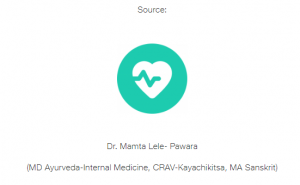[the_ad id=”6076″]
Lipstick is a staple in most people’s makeup routines. It adds color, vibrancy, and confidence to one’s appearance. However, have you ever wondered what exactly you’re applying to your lips? Beyond the beautiful shades and alluring packaging, lipsticks often contain a cocktail of chemicals, some of which can pose serious health risks if inadvertently ingested. In this blog, we will explore the types of lipsticks, the chemicals used in them, and the hazards of consuming inedible substances.
Types of Lipsticks
Before delving into the chemical components, let’s briefly explore the types of lipsticks available in the market:
Traditional Lipsticks: These are the classic, solid lipsticks that come in various shades and finishes, including matte, satin, and glossy.
Liquid Lipsticks: Liquid lipsticks provide a long-lasting, intense color. They are often preferred for their staying power.
Lip Balms and Glosses: Lip balms and glosses focus on moisturizing and enhancing the natural lip color. They are often less pigmented than traditional lipsticks.
Lip Stains: Lip stains offer a subtle, long-lasting tint to the lips, and they are known for their minimal transfer.
Chemicals in Lipsticks
Lipstick ingredients can be complex, and not all brands disclose their complete formulations. However, there are several common ingredients found in most lipsticks, and some of these can raise concerns:
Lead: Lead is a heavy metal that has been found in various lipsticks, even at low levels. Long-term exposure to lead can lead to serious health issues, including neurological and developmental problems.
Phthalates: These chemicals are often used to improve the texture and flexibility of lipsticks. However, they have been linked to hormone disruption and reproductive problems.
Parabens: Parabens are preservatives used in cosmetics. Some studies suggest that they may disrupt hormone function and could be associated with breast cancer.
Artificial Fragrances: Many lipsticks contain artificial fragrances that can trigger allergies and skin irritation.
Microplastics: Some lipsticks contain microplastics, which are tiny plastic particles that can harm the environment and potentially enter our bodies through ingestion. These are mostly seen in those glittery, shiny ones.
Hazards of Ingesting Inedible Chemicals
Consuming the chemicals found in lipsticks can have detrimental effects on your health. Here are some potential hazards:
Lead Poisoning: Even trace amounts of lead can accumulate over time, leading to lead poisoning. Symptoms may include cognitive impairments, developmental issues in children, and fertility problems.
Hormone Disruption: Phthalates and parabens can disrupt the endocrine system, potentially leading to hormonal imbalances, reproductive problems, and increased cancer risk.
Allergic Reactions: Artificial fragrances and other additives can cause allergic reactions, including itching, swelling, and redness of the lips.
Microplastic Pollution: When lipsticks with microplastics are washed off, these particles end up in water bodies, contributing to the growing problem of microplastic pollution, which can harm aquatic life and ecosystems.
Unintended Microplastic Consumption
In addition to the hazards posed by the chemicals in lipsticks, there’s another concerning aspect: the unintended consumption of microplastics. Studies have shown that microplastics can accumulate in our bodies through various sources, including the food we eat and the water we drink. Using lipsticks containing microplastics could add to this exposure, further raising environmental and health concerns.
Alternatives for Health-Conscious Consumers
If you’re concerned about the chemicals in mainstream lipsticks and their potential health hazards, there are alternatives available:
Vegan Lipsticks: Look for lipsticks labelled as vegan, as they are often formulated without harmful chemicals and animal-derived ingredients.
All-Natural Lipsticks: Explore brands that offer all-natural or organic lipsticks, which are typically free from synthetic additives and potentially harmful substances.
Homemade Lip Balms: Consider making your own lip balms using natural ingredients like coconut oil, shea butter, and natural pigments like beetroot or cocoa powder.
Conclusion
While lipstick is a beloved beauty product, it’s essential to be aware of the chemicals it may contain and the potential hazards associated with ingesting them. The health risks, including lead poisoning and hormone disruption, should not be underestimated. Additionally, the problem of microplastic pollution and unintended consumption is a growing concern.
To prioritize your health and minimize your environmental impact, consider opting for vegan or all-natural lipstick alternatives. Your lips deserve to be adorned with products that enhance your beauty without compromising your well-being or the health of our planet. Make informed choices, and you can enjoy luscious lips and peace of mind simultaneously.

